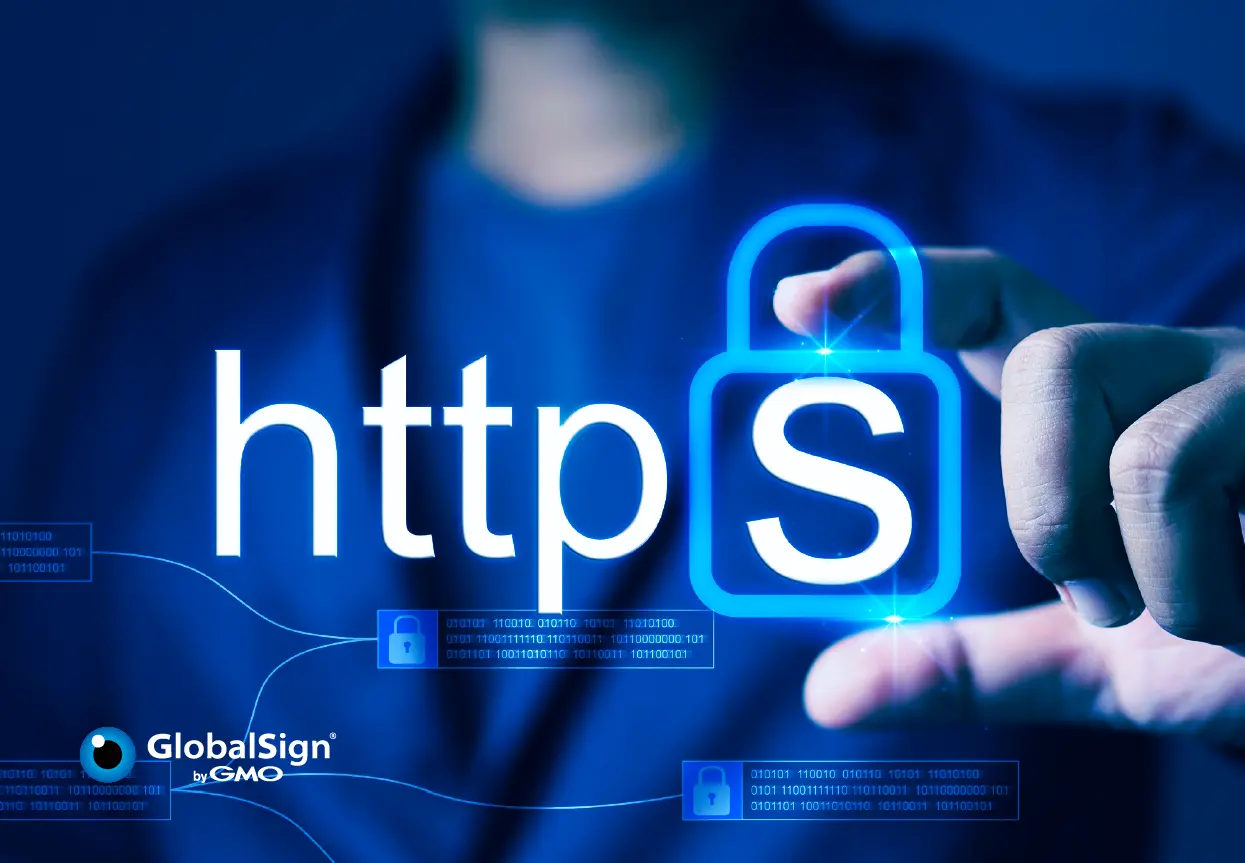
- January 07, 2025
- Jaya Mehmie
Code Signing Certificate Validity Changes: What This Means For You
The maximum validity period for Code Signing Certificates is decreasing, but what does this mean for you? Discover more in our blog.

The maximum validity period for Code Signing Certificates is decreasing, but what does this mean for you? Discover more in our blog.
In the fast-paced world of enterprise security the right partner for your digital security needs is non-negotiable. Here’s why you should choose GlobalSign.
Businesses heavily rely on digital certificates, but being crypto-agile is essential to prevent disruptions and respond to threats.

Artificial Intelligence (AI) has become a transformative force across various industries, revolutionizing the way we live and work. From improving…
From 1 September 2023, the new CA/B Forum Baseline Requirements come into effect, are you ready? Read on to learn more
PKI For Businesses: With the progressive evolution of the internet, ensuring the security of businesses' online presence has become an increasingly…

Artificial Intelligence (AI) has become a transformative force across various industries, revolutionizing the way we live and work. From improving healthcare to optimizing transportation, AI's capabilities are awe-inspiring. However, amid the advancements, it is crucial to recognize and comprehend the potential dangers that accompany this powerful technology. This blog sheds light on the importance of understanding AI risks and explores six potential dangers of artificial intelligence.
The Basic Requirements (BR) describe the minimum allowed settings and configurations for S/MIME. Read this blog for more information.
PKI For Businesses: With the progressive evolution of the internet, ensuring the security of businesses' online presence has become an increasingly formidable task, owing to the relentless advancements in cyber threats. While the battle against cyber threats remains ongoing, the risk can be significantly mitigated by incorporating Public Key Infrastructure (PKI) into your business strategy. Now before we dive deeper, let us try to understand the meaning of a Public Key Infrastructure (PKI)?

Protect your website and customers' data with a paid SSL certificate from a trusted CA. Enhance security, boost trust, and improve SEO with strong SSL encryption.
Streamline cert management! Our comprehensive guide simplifies the switch to automated certificates, saving you time and boosting security.
Electronic Signatures and Digital Signatures sound synonymous but we share the true meaning of each term as well as how they should be used.
In this blog we explore VoP requirements, the significance of QWACs, and the role of PSD2 in shaping payment security.
Ransomware is the most common type of cyberattacks on businesses. But what exactly is it and how do you prevent your business from being attacked?
Discover the key differences between single sign-on and multi-factor authentication as well as their applications and implementation processes.
For International Women’s Day, we take a look at the recent decline of women in tech and explore how organizations can address the gender gap.
Discover how PKI enhances digital identity security for governments, boosting efficiency, reducing costs, and supporting sustainability.
Explore how automating certificate management can save costs and boost efficiency. Get a cost-benefit analysis and step-by-step checklist.
The notary process is dependent on trust. Discover the role of digital signatures in remote online notarization and how they provide trust.
The education sector is vulnerable to cyber-attacks. Learn how institutions can manage digital security with limited budget and resources.
Electronic Signatures and Digital Signatures are terms often used interchangeably but join us as we explore everything you need to know about each type.
eIDAS 2.0 is gradually coming into effect, let’s break down the important updates related to the definition of electronic signatures.
The more data you acquire, the more encryption keys you need and the more important it becomes to protect them.
In this blog, we discuss the (evolving) requirements for S/MIME and the attempt to create a standard.
Learn how to safeguard your digital identity year-round with essential data protection tips and insights from a leading Certificate Authority.
An insight into the discussion between Dave Birch, Andreas Brix and Maxwell Chen around the future of digital identity and security in finance.
Understanding FERC’ order No. 676-K, updates to WEQ-012 and how to best select the right Certificate Authority (CA) for your needs.
Electronic Signatures and Digital Signatures are terms often used interchangeably but join us as we explore everything you need to know about each type.
Protecting online communications is fundamental for maintaining digital trust and preventing identity theft. The Secure/Multipurpose Internet Mail Extensions (S/MIME) certificate is designed to help…
Protect your customers and business reputation with trusted site seals. Learn how to identify and avoid fake seals to ensure online security and trust.
Protect your website and customers' data with a paid SSL certificate from a trusted CA. Enhance security, boost trust, and improve SEO with strong SSL encryption.
SSL certificates are indispensable for businesses and individuals alike. By reading this blog, you'll gain valuable insights into the importance of SSL certificates and how to effectively use them to…
Is your website's security compromised due to an expired CA root certificate? Don't panic! Our expert guide offers clear and concise steps to address this issue promptly. Learn how to identify the…
Premium SSL/TLS certificates are cryptographic certificates that protect users' data when they visit your website. They offer numerous value-added benefits like warranty coverage, stronger encryption,…
Certificate lifecycle management can be daunting, especially if you rely on traditional manual methods, but with certificate automation, you can eliminate inefficiencies and maximise your ROI.…
The digital world is full of opportunities, but it also comes with risks. This blog dives deep into the most pressing cybersecurity threats businesses face in 2024. We'll unpack the dangers of…
Discover updates to GlobalSign’s ACME service for issuing intranet SSL certificates, what it means and why they are important.
Free SSL certificates are cost-effective, but they don’t offer the same security and customisation features as premium SSL certificates.
Manual certificate management is inefficient and tedious, especially if you work with a large number of certificates. Now is the time to consider a Certificate Automation Manager solution.
All modern businesses have an online presence, which means that it is crucial to maintain and protect digital identities to establish trust and maintain security. Typically, businesses need to…
For decades, SSL/TLS (Secure Sockets Layer/Transport Layer Security) certificates have been the foundation for maintaining online trust, preventing fraud, and protecting digital identities. An…
Digital identity certification is an essential asset for businesses that need to maintain online trust and protect their data from fraudulent activities. However, while adopting PKI certificates…